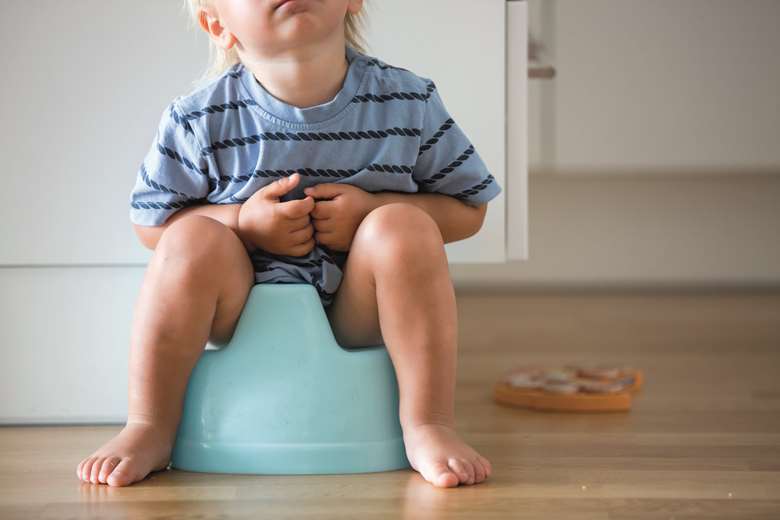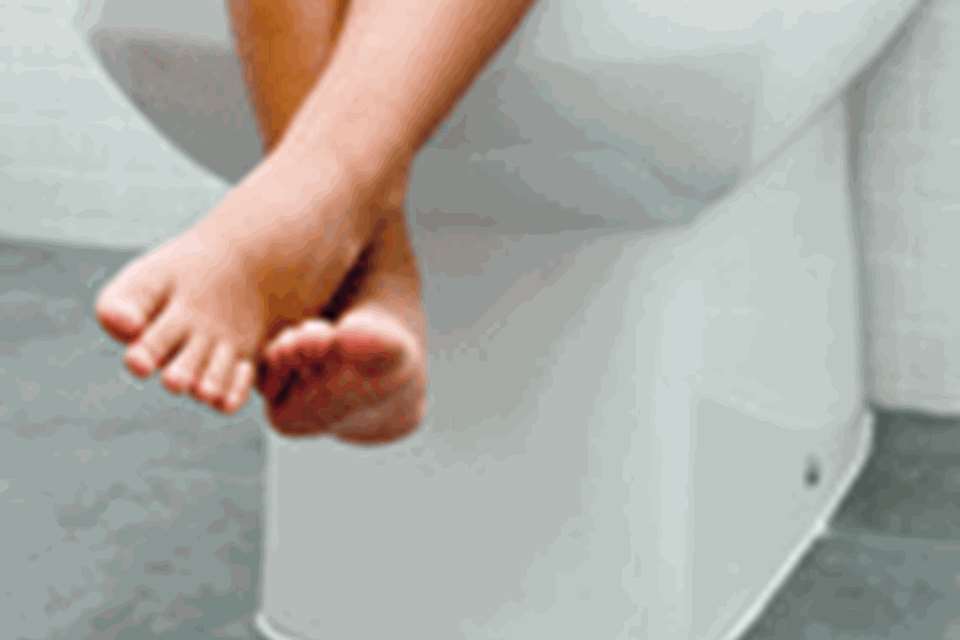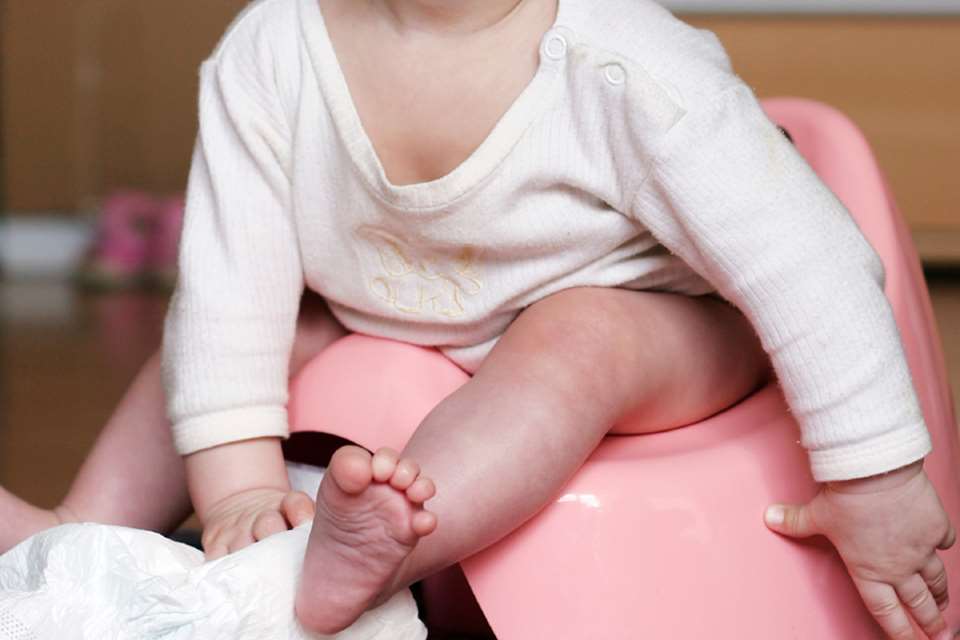Potty Training - Good to go
Annette Rawstrone
Tuesday, June 29, 2021
With more children wearing nappies for longer, what do early years practitioners need to know about potty training? Annette Rawstrone reports on the reasons for the trend and practical ways to help children become successfully toilet-trained

More children may be wearing nappies for longer as a trend towards later potty training continues. This, combined with the impact of the pandemic, is resulting in early years practitioners having to take more of a lead when it comes to toileting skills.
Ofsted found, in a report published in November 2020 on the effects of the pandemic, that some children who were potty-trained during lockdown had reverted to nappies. This occurred particularly among families where parents were unable to work flexibly. Providers also reported that, when they reopened, children were returning to nursery wearing nappies at an older age than they would usually expect.
GREATER ANXIETY
Although ERIC, the children’s bowel and bladder charity, does not have official data on how the pandemic has affected children’s potty training, anecdotally it believes there has been a negative impact.
Communications manager Alina Lynden says the charity has been receiving increased numbers of calls to its helpline. Parents are reporting that their children are now feeling nervous about going to the toilet away from the home, possibly due to not being used to unfamiliar facilities. ‘Children were limited in leaving the house during lockdown – many not even going to the shops – so the majority of their early life has been at home,’ she says.
Ms Lynden believes that the unexpected big changes to young children’s routines during lockdown, along with lots of discussions around germs and hand-washing, may have also led to greater anxiety, all of which can negatively impact toilet training. Additionally, some parents juggling work and childcare would not have had the capacity to start weaning their children off nappies.
While nurseries are now fully open, there is often less face-to-face contact with parents, with handover happening outside the building, leading to less opportunity for informal conversations around topics such as toilet training.
During the past 50 years, the age at which UK parents typically begin to toilet train has extended from one-and-a-half to nearer to three-and-a-half on average. Ms Lynden explains that this can be attributed to a number of factors, including the availability of convenient and absorbent disposable nappies resulting in parents using them for longer and a shift in parenting styles.
‘Rather than teaching children how to be confident to manage their toileting, there has been a shift to waiting for a child to tell [us] when they are ready,’ says Ms Lynden. ‘A lot of parents call our helpline feeling very nervous about damaging their child if they start potty training too early. But the trouble is that not all children will wake up one day and say that they are ready to be toilet-trained; in fact, that’s more unusual than the norm.’
A child-led approach works well when children are wearing washable nappies, but it isn’t always as effective with disposables due to less motivation to want to stop using them, Ms Lynden explains.
She adds that more children spend longer in childcare settings with childcare workers who may not have the skills or experience to support toilet training. Additionally, health visitor numbers are being cut or they are no longer commissioned to help with toileting, leaving families with fewer places to go for help.
RIGHT TIMING
When to start potty training depends on the individual child, but most are ready between 18 months and three years old. The timing has to be right for parents and carers because toilet training takes time, patience and can be messy!
The first stage of potty training is to recognise when a child is ready. Signs to look out for include:
- Pooing at least one soft poo four times a week.
- Staying dry for at least an hour and a half between wees.
- Showing an interest in the toilet.
- Following simple instructions.
- Being able to sit on a potty and get up again.
- Starting to show signs of awareness that they have done a wee or a poo.
Ms Lynden recommends keeping a chart of a child’s wees and poos in preparation for training. Placing some pieces of toilet roll in their nappy and checking it every half an hour can inform you how long they are able to hold their bladder and help the child make connections between releasing wee and feeling wet. A poo chart may reveal that a child has an underlying constipation problem, which a doctor can assess.
AVOID DELAYING
Delaying potty training can cause problems, including children becoming used to wearing nappies and losing the motivation to become clean and dry. ‘It is much easier for a younger child, under the age of two, to try something new than when they are three-and-a-half coming up four and have a more fully defined sense of their own self and wants and needs,’ says Ms Lynden. ‘There tends to be more resistance the longer they spend in nappies.’
For those children who start school wearing nappies, it can result in them developing self-esteem and confidence issues. Added to that is the time lost playing and learning because they are away from their friends having their nappy changed.
RECOGNISING READINESS
Ms Lynden says it is important that practitioners know the signs of readiness. They need to feel confident to speak to parents about potty training, and how to promote a healthy bladder and bowel by encouraging good fluid intake and knowing the signs of constipation.
‘Sadly, toilet training is still a topic that some people are not as comfortable with talking about and seeking help for as perhaps they should be,’ adds Ms Lynden. ‘We talk openly about sleep or how children are eating, but when it comes to wee and poo, it can feel a bit awkward. We urge practitioners to have conversations with parents about children’s bladders and bowels when they are settling them into nursery. They need to be checking what parents are thinking and doing. This then leads the way to future conversations on the issue.’
Practitioners responding to a survey conducted by ERIC and the National Day Nurseries Association in 2018 felt that parents needed more support with potty training. Despite parents increasingly relying on practitioners for potty-training guidance, the survey found that 70 per cent of respondents had received no training on how to do this. More than a quarter (27 per cent) looked online for support, while 25 per cent contacted their health visiting teams. Just over half had a potty-training policy in place at their setting.
‘Potty training is a key developmental milestone’ says Ms Lynden. ‘We owe it to our children to help them to achieve timely toilet training. With a good grounding in the basics and an understanding of how to identify common continence problems, families have the best chance to help their child use the toilet independently. It’s vital that parents and early years practitioners work together to give children consistent messages.’
ERIC’s advice for practitioners
- Constipation is very common in young children and can make toilet training really challenging. Being able to spot the signs of a problem and signpost parents for help and support (through their health visitor, GP or an organisation such as ERIC) can make a big difference.
- Be aware that lots of children only want to poo in a nappy, or start to withhold poo when they begin training.
- Children need to feel relaxed to go to the toilet so think about the environment and make it a pleasant place to be with books, bubbles, posters, singing songs, etc. This can help children withholding poo.
- Use toilet seats and footstools to help children feel secure and get into a good squat position (feet supported, knees higher than hips).
- Encourage boys to sit down to wee so that they empty their bladder fully. This also provides opportunities to poo that can be missed when standing.
- Avoid encouraging children to empty their bladders too often – this can get very boring for them and doesn’t allow their bladder to fill properly or help them learn to hold more. On average, children should be able to go one and a half to two hours between wees.
- The body’s natural, prime pooing time is actually 20-30 minutes after eating, so try to support this. Encourage children to sit on the potty or toilet after lunch, rather than before – which is a common mistake in early years settings.
- Make sure children have a drink at regular intervals throughout the day. This will help them to recognise their bladder signals and keep stools soft.
- Always reward children’s effort and not just success.
Further information
- ERIC has information and resources on its website to enable early years practitioners to work together with families. A free Potty Training Package includes a potty training policy: https://bit.ly/3xgihgD
- The charity also offers training courses on Supporting Children’s Toilet Training: https://bit.ly/3gpWQUI and a free helpline: 0808 169 9949
- Follow ERIC’s ‘Let’s Go Potty’ campaign for toilet training tips and news on Instagram: @lets.go.potty







